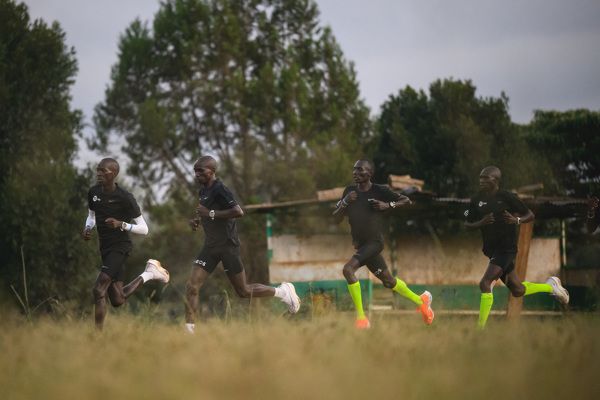Cycling on the roads
If you’re new to running, you may be wondering whether or not you should do any training other than running – what is commonly known as ‘cross training’.
Is it worth doing at all? If so, how much? What are its benefits? Should it be instead of, or in addition to running?
There are many questions to answer about cross training. But to be honest, there aren’t any hard-and-fast answers which apply to all runners. Every runner is an individual, and what suits one runner may be different from the next. It is worth experimenting to find out what suits you.
Perhaps the best use of cross training is during periods of injury, when you cannot run at all or less than you’d like to. Alternative forms of training during these times can help to maintain your fitness, and are a great way to enjoy the benefits of physical exercise such as being out in the fresh air.
But cross training also has considerable benefits even when you can run, and can complement your running training in various positive ways. Activities such as cycling and swimming have less impact so are more forgiving on your soft tissues than running. Aqua running and cycling on a stationary bike are great for intense anaerobic workouts.
While I was competing as an elite athlete in the marathon, I used cross training often – for recovery, during injury lay-offs, and to add variety to my training.
Where do you start with cross training? Here are my top tips to help you decide what, when and how much.
1 Similarity to running
If your main sport is running and you are cross training to improve your running, then choosing an activity which has some similarity with running is a good place to start. This may be in the physical action you perform (eg aqua running) or because an activity can provide an endurance workout (eg road cycling). No form of cross training will exactly replicate running, but some are more similar than others. I would always choose swimming or cycling over, for example, horse riding.
2 Do no harm
This may seem obvious, but taking steps to avoid injury applies as much as when you are running. A good warm-up and cool-down are essential, as is starting off gradually with any completely new activity until you get used to it.
3 Replicate flexibly
Trying to ‘copy’ a particular running session as a cross training session can be a useful rule of thumb. For example, a 30-minute easy run can simply be replicated with a 30-minute easy swim. However, try to avoid copying rigidly and be flexible. For example, when doing an intervals session on a stationary bike, I could never raise my heart rate to the same level as when running. Therefore, I aimed for 10 beats below what I would have done running; this provided roughly the same level of training intensity. Similarly, water supports your body weight unlike running, so effort in a pool will always need to be higher to reach the same heart rate as when running.
4 Mix it up
If you love running in nature and enjoy seeing beautiful countryside while you run, then cross training might seem a little boring. I certainly found it mentally tough doing long sessions on a stationary bike or elliptical trainer compared to running. So use variety as much as you can.
For example, when my training schedule called for a long steady effort, I would add in sets of mini intervals with just a little extra effort to break up the session. By exerting yourself only a little more than normal, it will still be a steady effort, but the variety of the efforts will make it more interesting.
5 Return to running cautiously
Cross training can maintain cardiovascular fitness very effectively, but remember that soft tissues such as muscles, ligaments and tendons may take a little longer to adjust when you return to running. It is easy to run too fast or too much when you return to running after injury because your cardiovascular fitness is not limiting. To avoid another injury, return to running gradually, while monitoring carefully how your body reacts to greater running loads.
I hope I’ve convinced you that cross training can be a terrific accompaniment to running training. It provides variety and relatively stress-free ways to improve your fitness. If you haven’t yet, do give it a try.
Mara Yamauchi for World Athletics Be Active










